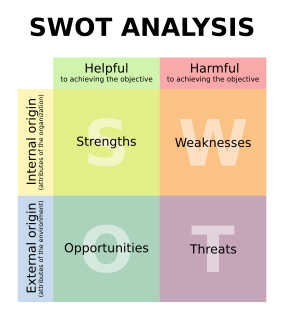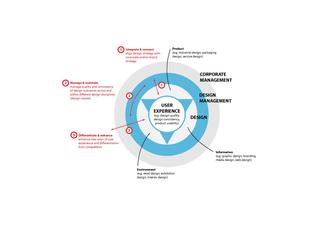Seena Sharp, author of Competitive Intelligence Advantage, is a recognized leader[ citation needed ] in Competitive Intelligence. She founded one of the first competitive intelligence company, Sharp Market Intelligence, in the US in 1979, in Los Angeles, a company that serves clients across the US, Canada, Europe, Asia, and Africa.
Competitive intelligence (CI) is the action of defining, gathering, analyzing, and distributing intelligence about products, customers, competitors, and any aspect of the environment needed to support executives and managers in strategic decision making for an organization.

The United States of America (USA), commonly known as the United States or America, is a country comprising 50 states, a federal district, five major self-governing territories, and various possessions. At 3.8 million square miles, the United States is the world's third or fourth largest country by total area and is slightly smaller than the entire continent of Europe's 3.9 million square miles. With a population of over 327 million people, the U.S. is the third most populous country. The capital is Washington, D.C., and the most populous city is New York City. Forty-eight states and the capital's federal district are contiguous in North America between Canada and Mexico. The State of Alaska is in the northwest corner of North America, bordered by Canada to the east and across the Bering Strait from Russia to the west. The State of Hawaii is an archipelago in the mid-Pacific Ocean. The U.S. territories are scattered about the Pacific Ocean and the Caribbean Sea, stretching across nine official time zones. The extremely diverse geography, climate, and wildlife of the United States make it one of the world's 17 megadiverse countries.
Contents
Seena had a successful corporate career in New York City, where she earned her master's degree in mathematics. Her research, speaking and conference activities focus on various aspects of market and competitive intelligence, including market drivers, keys to success, alternative uses, unknown customers, emerging competitors, competitor profiles, external factors, and opportunities.

The City of New York, usually called either New York City (NYC) or simply New York (NY), is the most populous city in the United States. With an estimated 2018 population of 8,398,748 distributed over a land area of about 302.6 square miles (784 km2), New York is also the most densely populated major city in the United States. Located at the southern tip of the state of New York, the city is the center of the New York metropolitan area, the largest metropolitan area in the world by urban landmass and one of the world's most populous megacities, with an estimated 19,979,477 people in its 2018 Metropolitan Statistical Area and 22,679,948 residents in its Combined Statistical Area. A global power city, New York City has been described as the cultural, financial, and media capital of the world, and exerts a significant impact upon commerce, entertainment, research, technology, education, politics, tourism, art, fashion, and sports. The city's fast pace has inspired the term New York minute. Home to the headquarters of the United Nations, New York is an important center for international diplomacy.
A master's degree is an academic degree awarded by universities or colleges upon completion of a course of study demonstrating mastery or a high-order overview of a specific field of study or area of professional practice. A master's degree normally requires previous study at the bachelor's level, either as a separate degree or as part of an integrated course. Within the area studied, master's graduates are expected to possess advanced knowledge of a specialized body of theoretical and applied topics; high order skills in analysis, critical evaluation, or professional application; and the ability to solve complex problems and think rigorously and independently.

Mathematics includes the study of such topics as quantity, structure, space, and change. It has no generally accepted definition.
Ms, Sharp has been widely published, speaks to organizations and universities throughout the US and Europe, and was presented with SCIP's Fellows Award. She is widely known[ citation needed ] for her unique techniques for identifying growth opportunities and market changes, examples of which are available in her monthly SharpInsights.

A university is an institution of higher education and research which awards academic degrees in various academic disciplines. Universities typically provide undergraduate education and postgraduate education.



